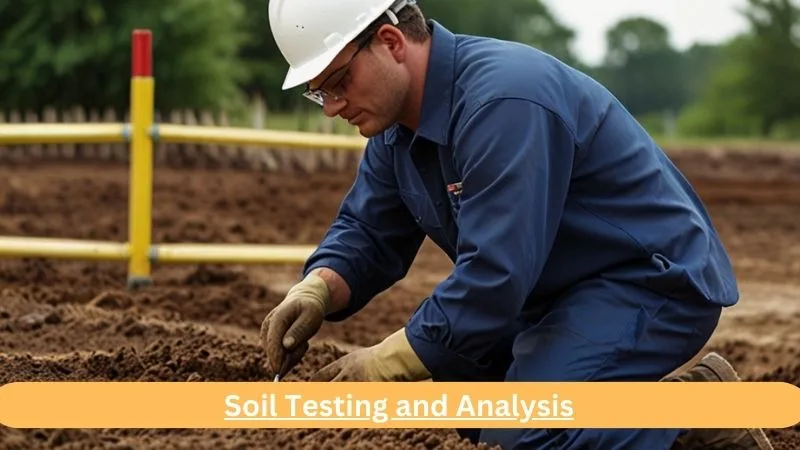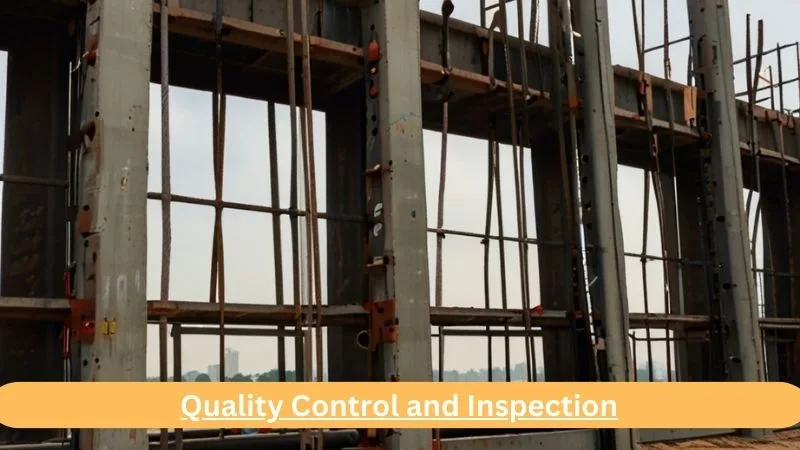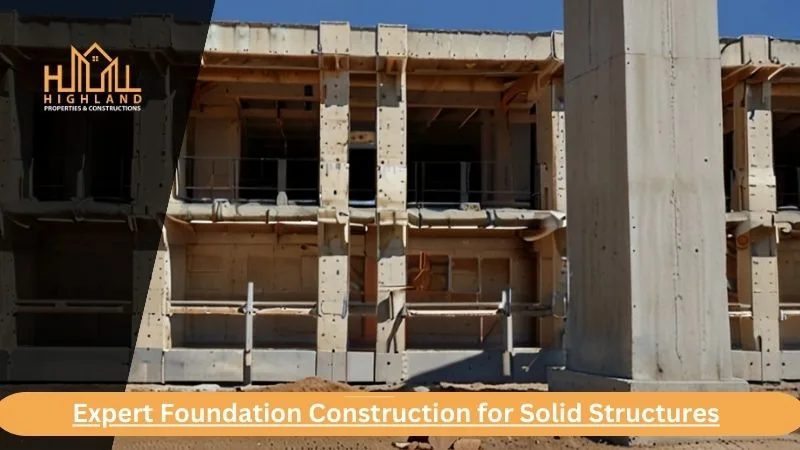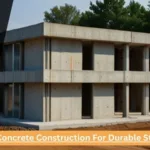Expert Foundation Construction for Solid Structures
Introduction:
Foundation Construction: Building a good model starts with a solid foundation. The foundation is the foundation of all construction, providing stability, strength, and durability. The foundation carefully ensures the building can withstand various forces, including gravity, weather, and seismic activity. This detailed guide explores the intricacies of foundation construction for commercial properties, from soil analysis to the intricacies of various types of foundations.
Understanding the Soil Composition:
Soil Testing and Analysis:

Completing a soil analysis before construction begins is essential. Soil testing includes tests to determine soil composition, strength, density, and moisture content. These features affect the type of foundation suitable for the site [Foundation Construction]. Geotechnical engineers perform these tests to measure the soil’s ability to expand, contract, or move.
Also Read: Top Roofing Services for Durable and Stylish Roofs
Necessary soil tests include:
– Standard Penetration Test (SPT): Measures the resistance of the soil to penetration.
– Cone Penetration Test (CPT): Measures ground stratification and strength.
– Test for Moisture Content: Identifies the soil’s moisture level.
– Atterberg Limits Test: Determines the plasticity and liquid limit of the soil.
Types of Soil:
Understanding the soil type at the construction site is essential for foundation design. Different soils have different properties that affect their behaviour under load:
– Clay: Clay is known for its flexibility and ability to retain water, expanding when wet and contracting when dry. This movement can make the foundation unstable.
– Sand: Sandy soils are generally stable but are susceptible to erosion and require measures to prevent displacement.
– Silt: Fine and smooth silt can retain moisture and make the sole more flexible.
– Loam: Loam is a clay, silt, and sand mixture that is generally ideal for construction due to its stability and good drainage.
Choosing the Right Foundation Type:
Shallow Foundation:
Shallow foundations are designed for smaller, lighter structures or solid foundations. They are also affordable and accessible to build. Types of foundations include:
-Spread Footing: Used to spread the load of a building over a larger area. They have a broader base than the column or wall they support.
– Strip Foundation: Strip foundation supports a wall.
– Slab-on-level: Concrete slab poured directly onto the ground to form the floor and foundation. Shallow bases are generally used for shallow areas with sufficient and low load capacity.
Deep Foundations:
Deep foundations must reach more solid soil or concrete for larger, heavier structures or areas with unstable soil. Types of deep rooting include:
– Pile Foundation: A steel, stone or wood pile driven into the ground to transfer loads to a stable soil or rock structure [Foundation Construction]. Piles can be classified as end-bearing piles (which rest in the ground) or friction piles (which use friction along their length to support the load).
– Drilling (Caisson): A large, deep hole is drilled into the ground and filled with additional rock. They are used for heavy loads and lateral solid resistance.
It is essential for deep foundations, tall buildings, bridges, and structures on difficult ground because it carries more load and is durable.
Foundation Design and Engineering:
Accurate load calculation is essential for foundation design. Engineers must consider various load factors, including:
– Dead Load: The weight of the structure itself, including walls, floor, roof and fixed materials.
– Live Load: It is the weight of live persons, furniture and other movable objects.
– Environmental Loads: Forces resulting from wind, snow, earthquake, and other natural events. These calculations help determine the foundation’s size, depth and development to ensure it can support what is expected.
Structural Reinforcement:

Reinforcement is an important part of foundation construction. This makes concrete stronger and more resilient. Reinforcement usually uses steel rods (steel rods) embedded in the stone to prevent tensile forces. Key points include:
– Rebar Placement: Ensure rebar is positioned correctly to provide maximum strength when needed.
– Concrete Mix: Select a mixture of cement, aggregate and water to achieve the required strength and durability.
– Curing Process: Repair the stone appropriately to ensure it reaches its full potential.
Construction Techniques and Best Practices:
Excavation and Site Preparation:
Proper excavation and site preparation are essential for a solid foundation. This involves removing debris, vegetation, and topsoil from the area. The excavation must be of the depth and length required for the foundation [Foundation Construction]. It is also important to consider drainage to prevent water from damaging your foundation.
Waterproofing and Drainage:
Waterproofing and drainage systems protect the foundation from moisture. Technology includes:
– Waterproof Membrane: A membrane prevents water ingress on foundation walls and floors.
– Drainage System: Install perimeter drains, pumps, and flat surfaces to direct water away from the foundation.
Quality Control and Inspection:

Strict controls and inspections throughout construction ensure the foundation complies with all rules and standards. This includes:
– Concrete Testing: Perform slump tests, compression tests and other tests to ensure quality.
– Rebar Inspection: Check the placement and service of rebar before pouring concrete.
– Structural Inspection: Regularly reviewed by engineers and building personnel to ensure compliance with design standards and regulations.
Maintenance and Longevity:
Regular Inspection:
Even the best-designed foundation should be checked regularly to detect potential problems and resolve them early. Check for cracks, leaks, and other damage.
Repairs and Upgrades:
Emergency repairs and improvements can extend the life of your foundation. This may include drilling or installing additional pipes to solve water problems.
Conclusion:
Professional foundation design is the cornerstone of all equipment. By understanding soil composition, choosing the proper foundation, and using meticulous design, construction, and maintenance, you can ensure your home is long-lasting and durable [Foundation Construction]. Whether building a tiny house or a massive skyscraper, investing in a well-designed and efficient foundation is critical to integrity and safety.
Foundation Construction – FAQs:
Q1. Why is it essential to build a solid foundation?
Ans: In addition to supporting the building and heavy objects, foundations can also act as stabilizers, preventing sideways or outward movement. They must be strong enough to withstand harsh weather conditions that may hit the house, like severe gusts, intense rain, and high winds.
Q2. What is the most solid Foundation?
Ans: Poured concrete is the strongest foundation type. The stone is solid and durable and can be cast into any shape. Ideal for supporting the eight of your home. Block foundations are still solid, but they do not change the shape of the concrete.
Q3. What is the primary purpose of the Foundation?
Ans: The Foundation is the part of the system that supports and anchors the building’s superstructure and transfers its loads directly to the ground. The bottom of the Foundation should be below the frost line to prevent damage from repeated freeze-thaw cycles.





Leave a Reply